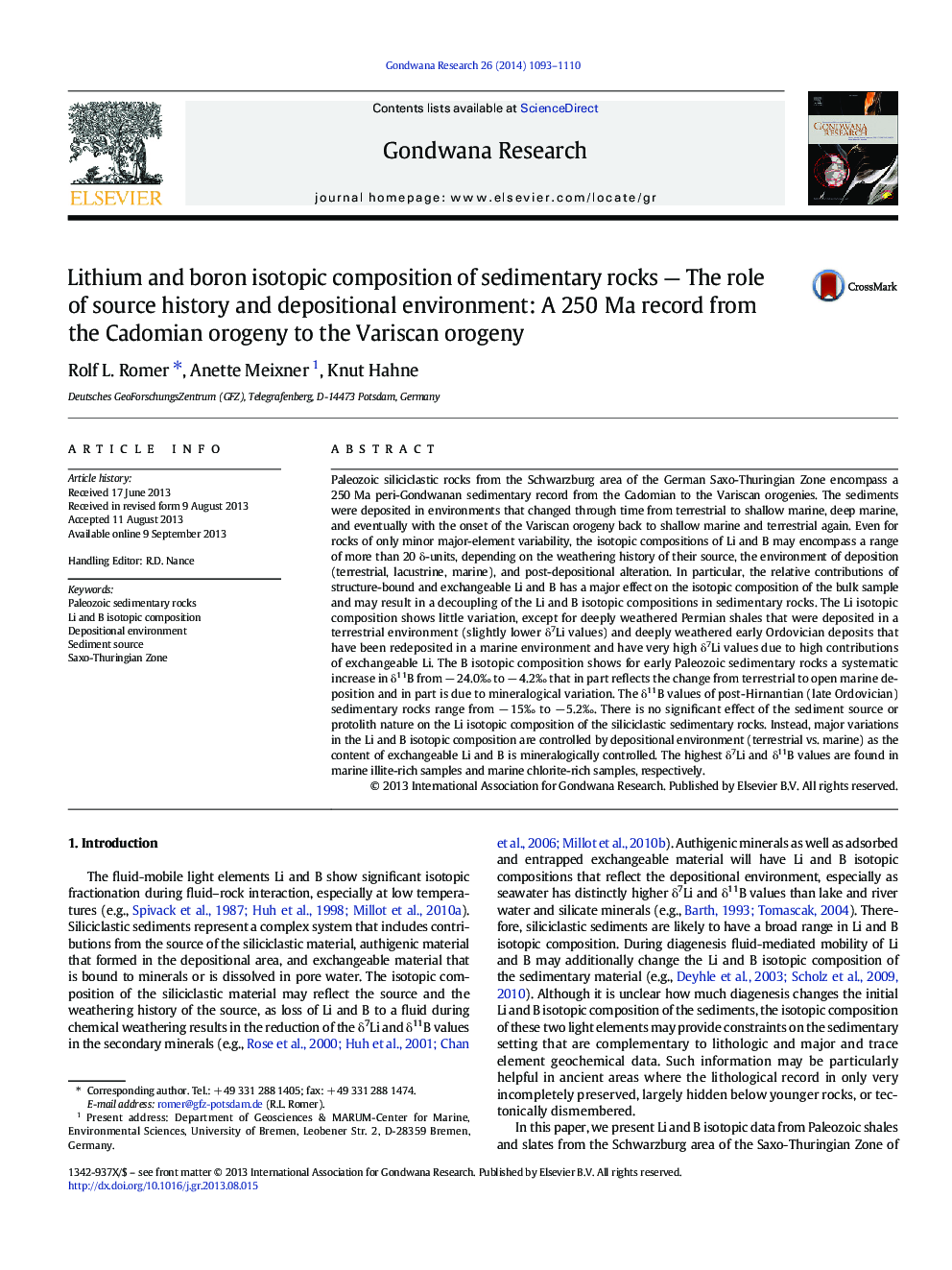| کد مقاله | کد نشریه | سال انتشار | مقاله انگلیسی | نسخه تمام متن |
|---|---|---|---|---|
| 4726842 | 1640142 | 2014 | 18 صفحه PDF | دانلود رایگان |

• δ7Li and δ11B of siliciclastic sediments do not correlate and vary by more than 20‰.
• Decoupling of δ7Li and δ11B is mineralogically controlled.
• δ7Li and δ11B of exchangeable contributions depend on deposition environment.
Paleozoic siliciclastic rocks from the Schwarzburg area of the German Saxo-Thuringian Zone encompass a 250 Ma peri-Gondwanan sedimentary record from the Cadomian to the Variscan orogenies. The sediments were deposited in environments that changed through time from terrestrial to shallow marine, deep marine, and eventually with the onset of the Variscan orogeny back to shallow marine and terrestrial again. Even for rocks of only minor major-element variability, the isotopic compositions of Li and B may encompass a range of more than 20 δ-units, depending on the weathering history of their source, the environment of deposition (terrestrial, lacustrine, marine), and post-depositional alteration. In particular, the relative contributions of structure-bound and exchangeable Li and B has a major effect on the isotopic composition of the bulk sample and may result in a decoupling of the Li and B isotopic compositions in sedimentary rocks. The Li isotopic composition shows little variation, except for deeply weathered Permian shales that were deposited in a terrestrial environment (slightly lower δ7Li values) and deeply weathered early Ordovician deposits that have been redeposited in a marine environment and have very high δ7Li values due to high contributions of exchangeable Li. The B isotopic composition shows for early Paleozoic sedimentary rocks a systematic increase in δ11B from − 24.0‰ to − 4.2‰ that in part reflects the change from terrestrial to open marine deposition and in part is due to mineralogical variation. The δ11B values of post-Hirnantian (late Ordovician) sedimentary rocks range from − 15‰ to − 5.2‰. There is no significant effect of the sediment source or protolith nature on the Li isotopic composition of the siliciclastic sedimentary rocks. Instead, major variations in the Li and B isotopic composition are controlled by depositional environment (terrestrial vs. marine) as the content of exchangeable Li and B is mineralogically controlled. The highest δ7Li and δ11B values are found in marine illite-rich samples and marine chlorite-rich samples, respectively.
Figure optionsDownload as PowerPoint slide
Journal: Gondwana Research - Volume 26, Issues 3–4, November 2014, Pages 1093–1110